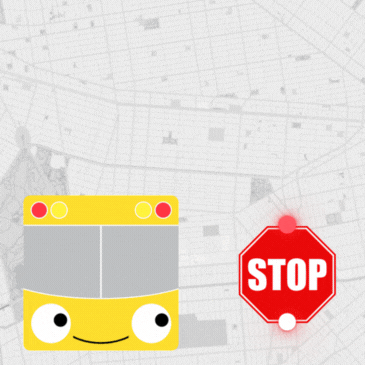 When the Brooklyn subway lines had strikebreakers drive trains in 1918, the result was a disaster.
When the Brooklyn subway lines had strikebreakers drive trains in 1918, the result was a disaster.The worst accident in the history of the New York subway system—the Malbone Street wreck of 1918, which killed at least 93 people—happened because an inexperienced strikebreaker drove a train too fast.
On Nov. 1, 1918, ten days before the end of World War I, motormen of the Brotherhood of Locomotive Engineers went on strike against the Brooklyn Rapid Transit Company, the forerunner of the BMT. BRT officials decided to keep the trains running, using nonstriking workers to drive them.
One of the strikebreakers was Edward Luciano (a.k.a. Antonio Luciano, Anthony Lewis, and Billy Lewis), a 23-year-old BRT dispatcher who’d never driven a train outside of the yards before. He did a 10-hour shift on the Culver line (now the F train), a relatively straight and level route. When rush hour came, the BRT put him on a second shift on the curvier, hillier Fulton Street-Brighton line, which demanded much more skill.
In 1918, a Scab Motorman Caused Worst Wreck in Subway History
 When the Brooklyn subway lines had strikebreakers drive trains in 1918, the result was a disaster.
When the Brooklyn subway lines had strikebreakers drive trains in 1918, the result was a disaster.
The worst accident in the history of the New York subway system—the Malbone Street wreck of 1918, which killed at least 93 people—happened because an inexperienced strikebreaker drove a train too fast.
On Nov. 1, 1918, ten days before the end of World War I, motormen of the Brotherhood of Locomotive Engineers went on strike against the Brooklyn Rapid Transit Company, the forerunner of the BMT. BRT officials decided to keep the trains running, using nonstriking workers to drive them.
One of the strikebreakers was Edward Luciano (a.k.a. Antonio Luciano, Anthony Lewis, and Billy Lewis), a 23-year-old BRT dispatcher who’d never driven a train outside of the yards before. He did a 10-hour shift on the Culver line (now the F train), a relatively straight and level route. When rush hour came, the BRT put him on a second shift on the curvier, hillier Fulton Street-Brighton line, which demanded much more skill.
Luciano piloted the five wooden cars from Park Row in Manhattan down the elevated line on Fulton Street, but missed the turn onto what are now the Franklin Avenue Shuttle tracks and had to back up. Trying to make up for lost time, he overshot the Park Place station and skipped the next one.
At Malbone Street, where the Franklin Avenue tracks went underground to connect to the Brighton line—now the Q line—at Prospect Park, there was an S-curve with a 6-mph speed limit. Luciano took it at somewhere between 30 and 70 mph. The first car derailed. The second smashed into a concrete abutment, ripping off its roof and side. In the third car, survivor Walter Simonson told the New York Times, “I felt the car rise from the rails and turn partly over, striking against the concrete pier at the entrance to the tunnel with such force as to tear out the entire side of the car.”
Most of the people in those two cars were killed or seriously injured. Some were decapitated or impaled on iron bars. The crash was heard a mile away, the Times said. The official death toll was 93 people, but up to ten more may have died of injuries later; more than 100 were injured.
Luciano left the scene and was arrested at his home later that night. He and five BRT officials were charged with manslaughter. The motormen decided to end the strike at 2 a.m.
In the aftermath, the five BRT officials and Luciano were acquitted, but the company went bankrupt. The subway lines replaced the antiquated wooden cars with metal ones, and they installed automatic trippers that stop the trains if they go too fast. The name “Malbone Street” evoked such bad memories that it was changed to Empire Boulevard-though a half-block strip survives at the southern edge of Crown Heights.
And in the three subway strikes since the system was consolidated in 1940, there has been no serious talk of having “replacement workers” run the trains.













Crown Heights- booster
And because of the horror of the accident, Malbone Street was renamed "Empire Boulevard." The only part of Malbone Street keeping the same name is the Lubavitch housing behind the Mobil station.